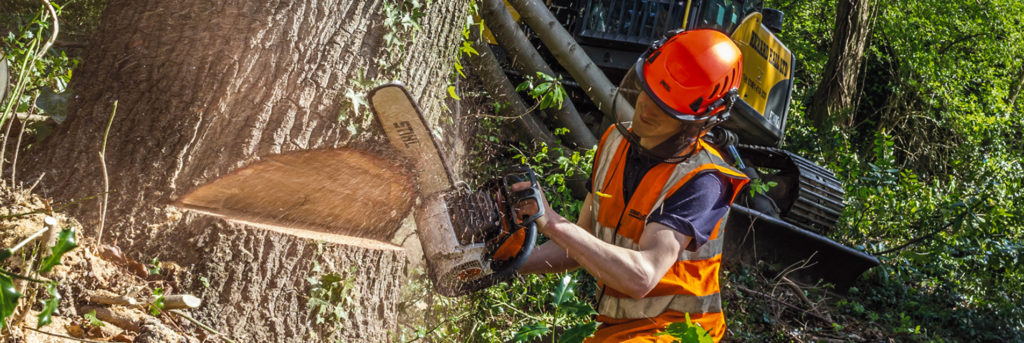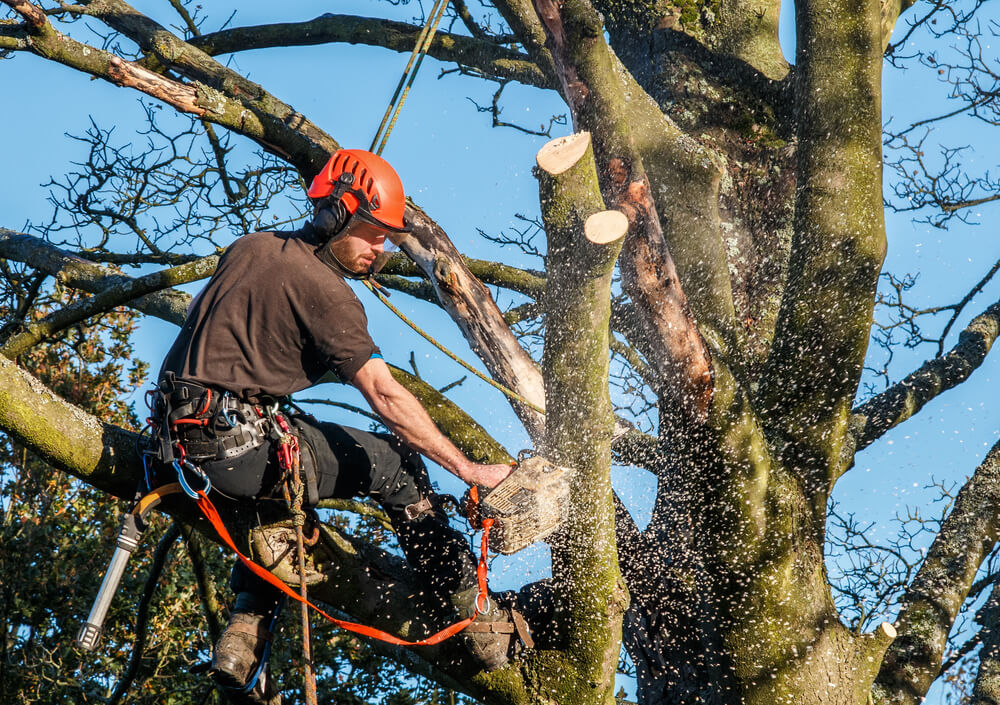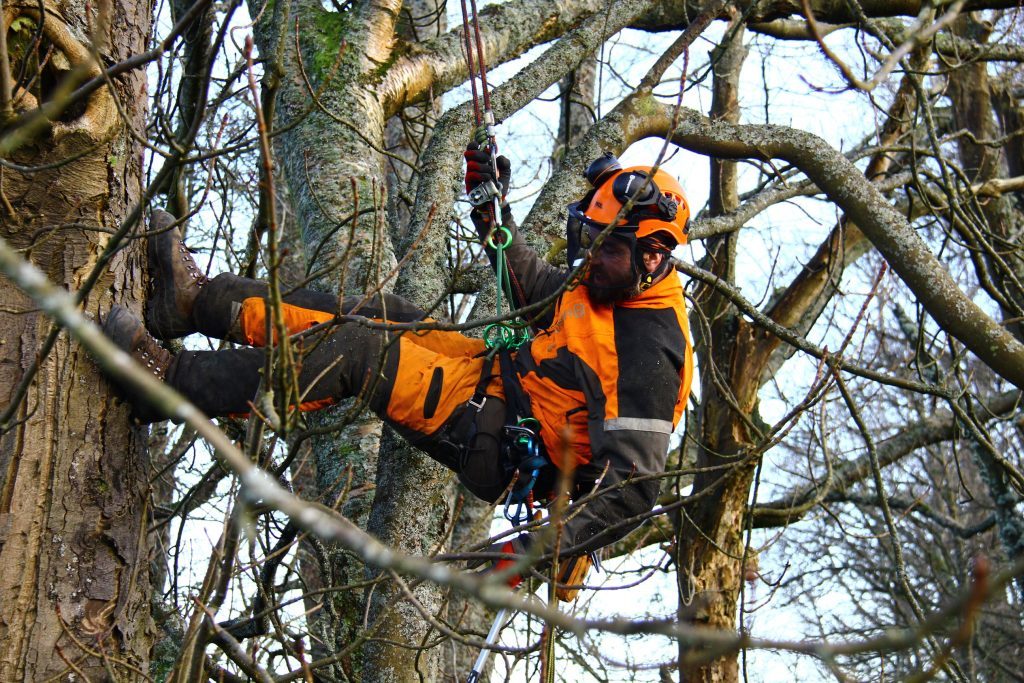From those in the industry, tree surgery is considered one of the best and most rewarding jobs out there, and can be considered a lot of fun.
But it’s important to remember that these are highly skilled and trained individuals. Without the experience, skills and expertise, tree surgery can lead to severe injuries, which is why it is often ranked as one of the most dangerous professions.
Before we get in to the details, the message here is if you’re not experienced in tree surgery, leave it to the professionals (this article will explain why). Our tree surgeons cover Glossop, Ashton and the whole of the Greater Manchester area, so give us a call to discuss your options before taking on any tasks yourself, big or small.

Tree Surgery Risks
Realistically, the threats are obvious; you’re often at great heights, you’re using complex machinery, you’re often working in challenging weather conditions, yet there are still many people who think it is a task they are able to carry out themselves.
A 2017 UK wide study, carried out by the AXA, found that 28% of people would try and fell a tree themselves, which to us is extremely alarming. This becomes even more troubling when you take in to account that between 2003 and 2013, 24 qualified tree surgeons/arborists were killed when carrying out tree related work, and a further 1,400 were injured. These injuries were mainly caused by:
- Death or injuries involving chainsaws
- Falling from heights
- Being struck by falling timber/trees
When conducting their study, the AXA also found that 23% of respondents wouldn’t check if they needed permission, or see if their was a TPO in place before felling a tree. So as well as the risk of causing injury, you could also end up with a hefty fine if you’re not following the correct procedures.
Minimising the Risk of Tree Surgery Injuries
All of our tree surgeons understand the risks involved and are fully trained to ensure all of the work carried out is following strict health and safety guidelines. Some of the key things you need to take in to consideration and asses, which we will go in to more detail about below, are:
- Putting proper control measures in place when working at height
- Ensure you are properly trained and physically able to work with all of the machinery you will need
- If you’re working alone, make sure you are fully reachable and that people know where you are
Working at Height
According to the Health and Safety Executive, around 16% of tree related accidents involve falling from height, with 6% due to uncontrolled swings in the tree, which cause impact with the trunk or branches.
To minimise the risks of working at height, make sure you properly assess the area, and the work needed before getting started, be appropriately supervised and ensure your equipment is regularly inspected and maintained, as well as using the correct safety equipment.

Working with Machinery
Tree surgeons are specifically trained to work with hazardous machinery such as stump grinders and chainsaws, but we too have to take great precautions when it comes to tree felling.
It is essential that anyone working with a chainsaw has received adequate training and is fully competent and comfortable working with one, especially if at height. It’s also the law. The Health and Safety Executive found that the most fatal chainsaw related injuries involve operators taking shortcuts or not following best practice as a way to save time. When using a chainsaw you should always:
- Ensure you’re alert, have good vision and are in good physical health
- Take your time
- Wear appropriate chainsaw protective clothing
Lone Working
Occasionally tree surgery work will be carried out alone, or at least some distance from others. When this is the case you need to take extra care assessing any risks you may face, ensure other members of staff know where you are and be fully contactable.
If you are used to lone working, or frequently work for different businesses or contractors, ensure you get to know who you are working with and that you have, or have provided personal details and your medical history.
The purpose of this article was to provide safety information for other tree surgery professionals, or people wanting to get in to the industry, not for people wanting to DIY. If you’re not experienced the risks simply aren’t worth it, as we hope some of the statistics in this post have shown. Rock Tree Surgeons are happy to look at any job, so for any more information contact us today.

